August 31, 2021
The Dressmakers of Auschwitz – Lucy Adlington
A very thoughtful review
Published By: Hodder and Stoughton
Pages: 400
Date Released: 02/09/2021
At the height of the Holocaust, 25 young inmates of the infamous Auschwitz-Birkenau concentration camp were selected to design, cut, and sew beautiful fashions for elite Nazi women in a dedicated salon. It was work that they hoped would spare them from the gas chambers. The fashion workshop – called the Upper Tailoring Studio – was established by Hedwig Höss, the camp commandment’s wife, and patronised by the wives of SS guards and officers,
Drawing on diverse sources – including interviews with the last surviving seamstress – this book follows the fates of these brave women. Their bonds of family and friendship not only helped them endure persecution, but also to play their part in camp resistance. Weaving the dressmakers’ remarkable experiences within the context of Nazi policies for plunder and exploitation, historian Lucy Adlington exposes the greed, cruelty and…
View original post 216 more words
July 21, 2021
The 1940s Wardrobe – Coats
‘A smart coat is one of the first essentials of a good outfit’
Woman’s World magazine, April 27th 1940
Coats can be overlooked in clothes histories, but they are a basic staple of the 1940s wardrobe. A good quality coat was an investment. Canny consumers chose styles that would be practical, protective and stylish.
Womenswear coat styles at the start of the decade favoured either a fairly slender silhouette with mildly padded shoulders, or a generously swagged short coat, often in plaid wool.

Tailor-made coats were not only for the elite. Textile centres such as Leeds, Manchester and London boasted specialists who could produce a well-fitting coat. Customers provided their own fabric or chose from a selection of samples. The coats would be priced per size, and according to the fabrics used.

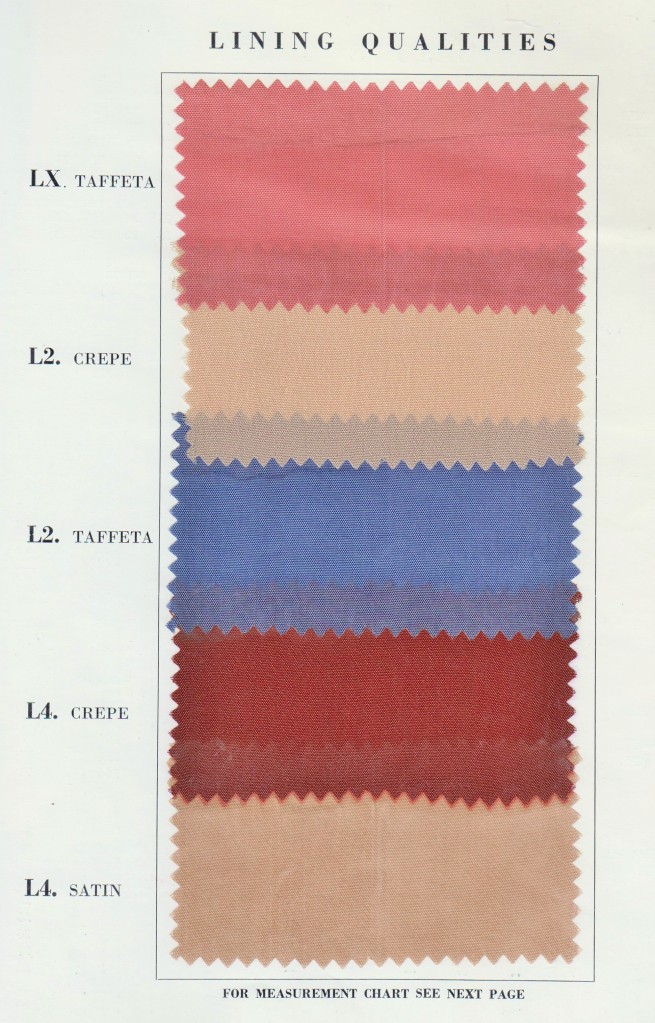
For convenience, coats could also be purchased via mail order. After browsing catalogues with sketches of designs (sometimes in colour, but usually black and white), a postal order form and payment secured delivery. Shoppers had to trust the glowing description of each coat – there was liberal use of adjectives such as ‘smart’, ‘luxury’, ‘attractive’, ‘popular’ – and to hope that the fit is good when the garment arrives. Some catalogue companies offered seven days’ free approval period before requiring payment. Once rationing was introduced, consumers also had to count coupons to ensure they have sufficient for their new acquisition. In Britain, allocated points dropped from 66 a year to 24. A woman’s coat required 18 points – a considerable proportion of clothing points. Not a purchase to be undertaken lightly…

The British government introduced a system of streamlining production and designs, which came to be known as ‘Utility’. Utility garments aimed for decent quality, affordable pricing and as much flair and variety as restrictions would permit. In this catalogue from Derry & Tom’s department store in London there are two options for a Harella coat. A more deluxe version in off-white wool for £11, 3/1, and a Utility version in mid brown or green for only £4.10/9 18 coupons. Even if you could afford the prices, you still needed to surrender 18 clothing coupons. There was also the small matter of wartime stock shortages: you could have the money and the points, but shop rails might be empty.

If you had both time and talent there was always the economical option of making your own coat. Patterns were available from companies such as Vogue, Maudella and Butterick. You could also send off for sixpence patterns from magazines such as Woman’s World. Good construction used a range of techniques. The Haslam system of cutting, created by a Lancashire woman, offered an accessible guide to tailoring techniques.

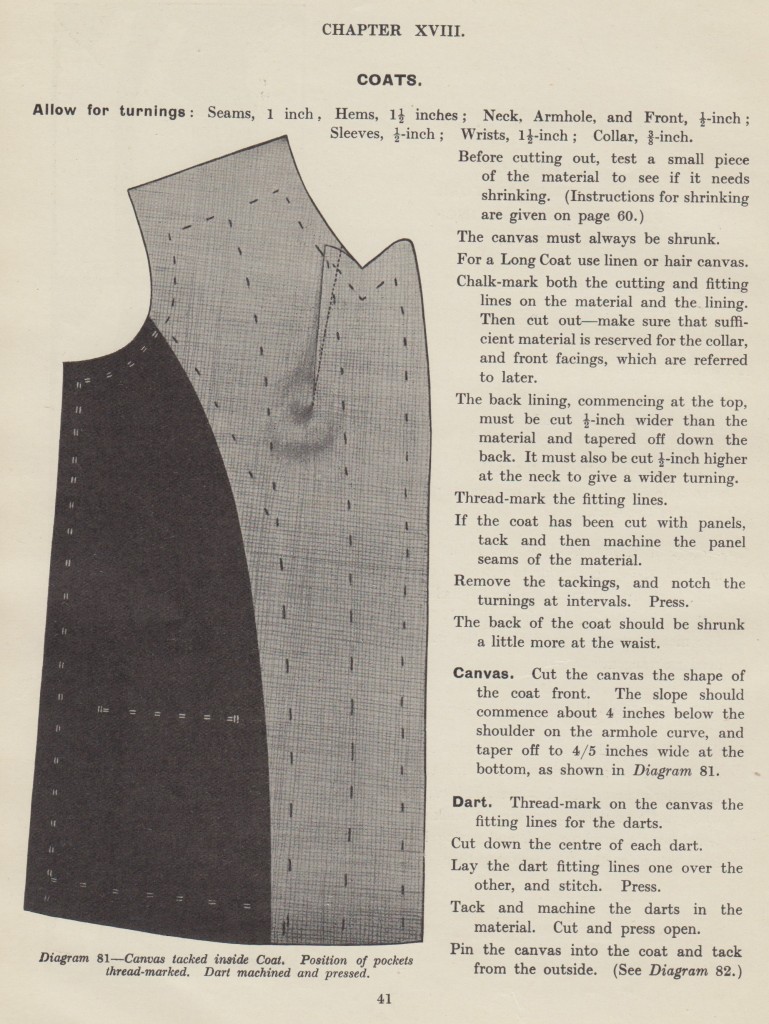
For extra economy – or if new fabrics just weren’t available – existing clothes could be adapted, in keeping with the age-old spirit of make-do-and-mend. Old coats could be unpicked, turned (to avoid stained and faded outer parts) and dyed to freshen them up, then updated to new fashionable styles, or cut down into smaller garments.
The Pictorial Guide to Home Needlework offered ideas for how to turn a man’s shabby overcoat into a child’s winter coat, or to convert an old-fashioned flaring swagger coat into a smart new renovation.

British couturier Digby Morton played his part designing smart uniforms for the Women’s Voluntary Service, including coats made of grey-green wool. Servicewomen appreciated the smart, warm coats issued as part of their kits.

Good quality wool (with an umbrella) was good for wet weather, but waterproof raincoats were highly coveted, particularly as rubber was in short supply.
This translucent coat was bought in Rome in 1944 by a sapper in the British 8th army, and sent home to his sweetheart in England. The stitching is very nice quality. British firms advertised coats of ‘Raintite pliofilm’
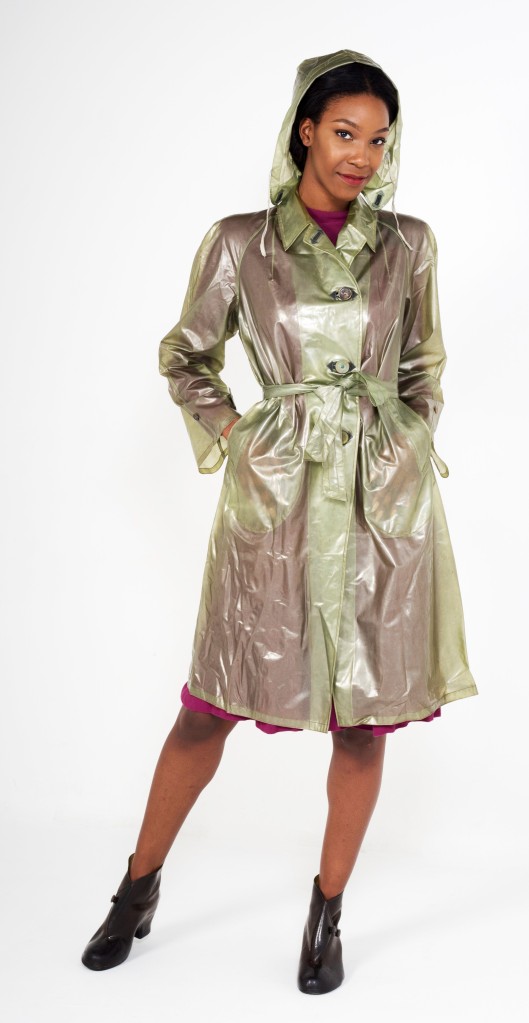
Fur was essential to endure winter weather. High quality pelts gave luxury to the elite, but rabbit fur was relatively inexpensive and truly very warm. Old pieces of fur could be used to revamp an existing coat by adding fur collar & cuffs, although fur is tricky to sew. For extra snugness, accessorise your fur coat with matching gloves and muff.
Synthetic fibres – aka fake fur – were not as warm as real fur, but an acceptable wartime alternative. This coat was gifted to a woman who lost all her belongings during the infamous 1942 Coventry bombing. She later said she felt embarrassed to own and wear such a coat, when some people had nothing.
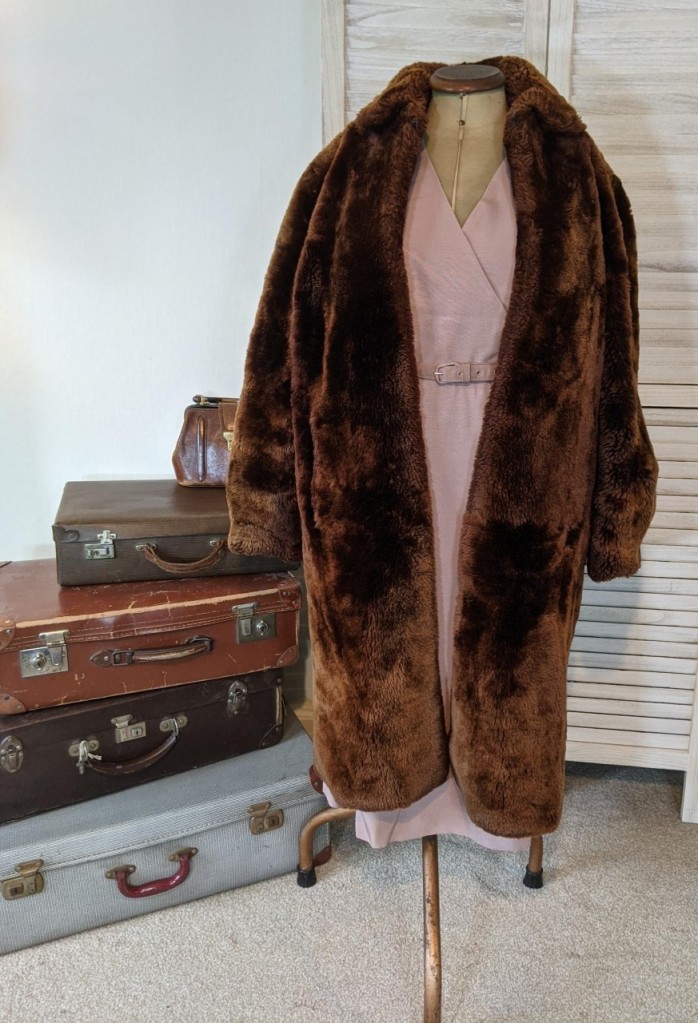
However you acquired your coat – from a shop, clothes-swap, jumble sale or salvage project – it would have to be very good quality to see you through to peace and beyond. In Britain, wool supplies for women’s wear were cut post-war to favour the manufacture of men’s demobilisation suits. Military surplus sales at least provided blankets which could be made into coats. Fuel shortages meant even high fashion in post-war Paris aimed combine elegance with warmth.

After 1947 the new lines of Christian Dior’s New Look were absolute trendsetters. British women who didn’t have enough clothing coupons or money to buy these extravagant styles adapted as best they could by adding bands of fabric or fur to existing coat hems.


For more on 1940s clothing history you may enjoy
Women’s Lives and Clothes in WW2: Ready for Action
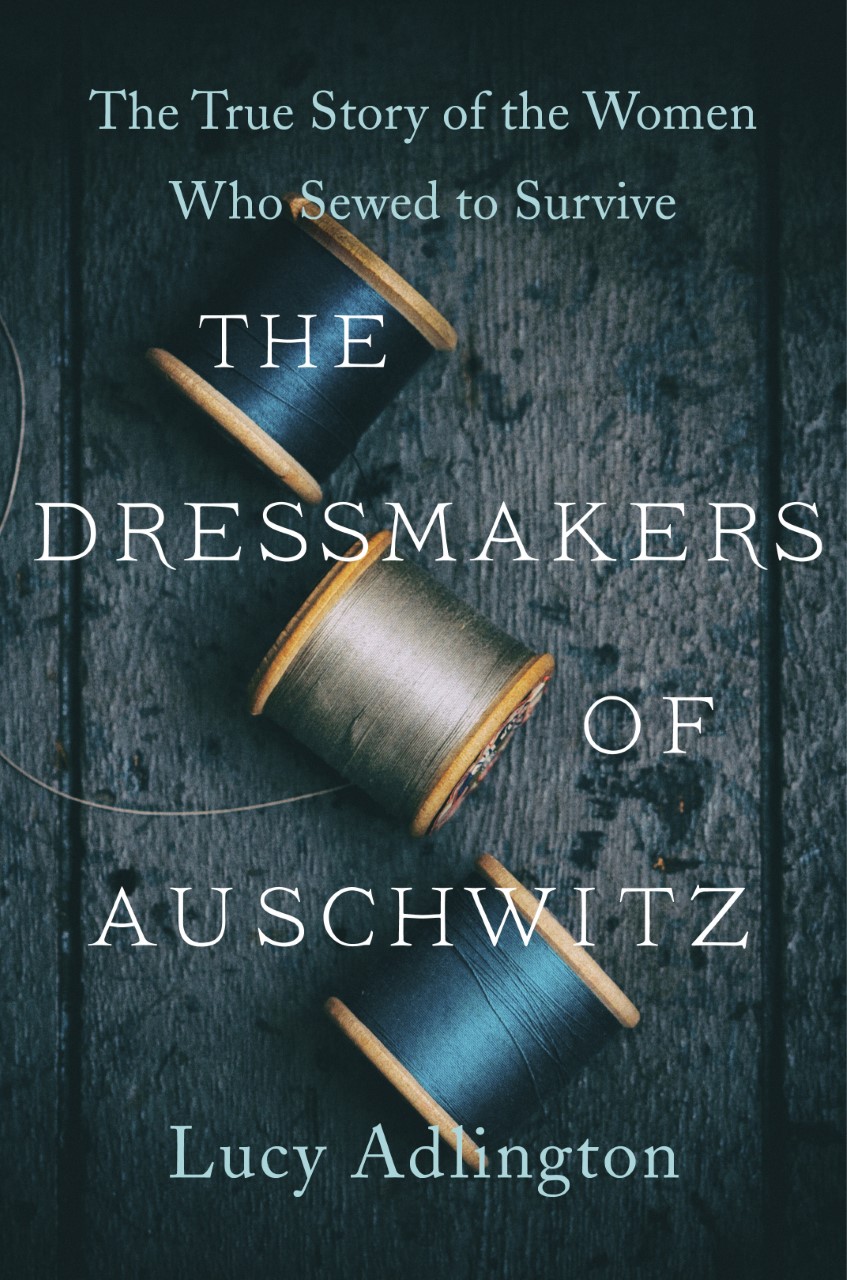

All images are from the History Wardrobe collection
April 22, 2019
Photography Essay: Henryk Ross
Henryk Ross
 A German postcard showing the entrance to the Łódź ghetto. The sign reads “Jewish residential area—entry forbidden.” Łódź, Poland, 1940-1941.
A German postcard showing the entrance to the Łódź ghetto. The sign reads “Jewish residential area—entry forbidden.” Łódź, Poland, 1940-1941.
— US Holocaust Memorial Museum
 Prior to the outbreak of World War II, Henryk Ross1 was a sports photographer. Not long after Germany invaded Poland, an area of Łódź , itself a centrally located city of Poland was closed off and sealed. Ross was forced to live in this ghetto.
Prior to the outbreak of World War II, Henryk Ross1 was a sports photographer. Not long after Germany invaded Poland, an area of Łódź , itself a centrally located city of Poland was closed off and sealed. Ross was forced to live in this ghetto.
 Henryk Ross
Henryk Ross
Ross managed to get a job as one of the official photographers of the ghetto. Along with his colleague Mendel Grossman, Ross was in charge of producing identity and propaganda photographs for the Department of Statistics.
Due to his task, Ross had access to film and processing facilities. His task was to show the Jews living a normal life in the ghetto. Outside of his official duties, he used his camera to produce a clandestine diary of…
View original post 1,419 more words
January 9, 2018
BOOK REVIEW: The Red Ribbon by Lucy Adlington
A beautiful review of The Red Ribbon with particular appreciation for dressmaking
Hello!
Thank you so much for stopping by!
This blog post is a little bit different to previous posts but I hope fellow sewists will appreciate it. A few months ago I attended the launch of Lucy Adlington’s latest book, The Red Ribbon. If you haven’t heard of Lucy, I suggest you look her up straight away. Lucy is a fashion historian, writer, actress and vintage clothing collector who runs her own business, History Wardrobe. She and her colleagues tour the country staging fashion history presentations, which are so fascinating and entertaining. To be honest, I think I want to be her!
When I heard Lucy had written a novel based on an actual sewing workshop set up in Auschwitz during the Second World War, I knew it would be a gripping read.


The workshop was established by Hedwig Hoss, the Auschwitz Commandant’s wife, who loved…
View original post 549 more words
October 5, 2017
The Red Ribbon [review]
I’m so pleased this story of 1940s dressmakers is having such a powerful and positive response
September 26, 2017
The Red Ribbon by Lucy Adlington |REVIEW
Great review thank you. The true story of the dressmakers of Auschwitz is absolutely startling. I couldn’t resist writing about it. It’s a lovely lovely hardback edition too.
July 31, 2017
Laura Ashley Sample Book of Secrets
A charming mini masterpiece for fans of Laura Ashley fabric
After much deliberation I finally decided how to present the Laura Ashley sample quilts that I wrote about on the blog towards the end of last year. These are tiny little pieces using up the very smallest scraps of the Laura Ashley fabric I have been given and adding elements to them to suggest a narrative which we can’t unlock but can’t resist putting together. For example:
I am very committed to the idea that we are all born storytellers and that this is how we make sense of the world, so when we see something like the little red quilt above, we start to make up our own story to explain why there is a spoon with the Mayflower on it: a present from an American relative? A souvenir of a special trip? A birthday present from a friend who knew about the spoon collection? A Daughter of the…
View original post 495 more words
June 15, 2017
The Victorian Seamstress
How easy it is to take our clothes for granted… and to forget those who labour making them. I’m always eager to hear tales of the dressmakers, tailoresses and seamstresses from the past, so often lost to history, or surviving only in the vintage garments that remain.
“…a very elegant, kind, loving woman”

Eleanor c. 1895
A History Wardrobe fan recently shared images of her grandmother Eleanor, born in 1867, and married, aged 30, to a Younger Man (only 23 – heavens!). Before her marriage Eleanor worked at Pennington’s Department Store in Spalding, Lincolnshire. The original shop opened in 1850, and only closed when it was hit by a bomb in 1941. I came across a lovely memoir about a dressmaker’s apprentice at Pennington’s in the 1930s.
Back in Eleanor’s day, customers usually bought their fabric first – a dress length or a costume length – then it was made up by the seamstress. Designs could be chosen from a shop display, or from commercial fashion illustrations and patterns.
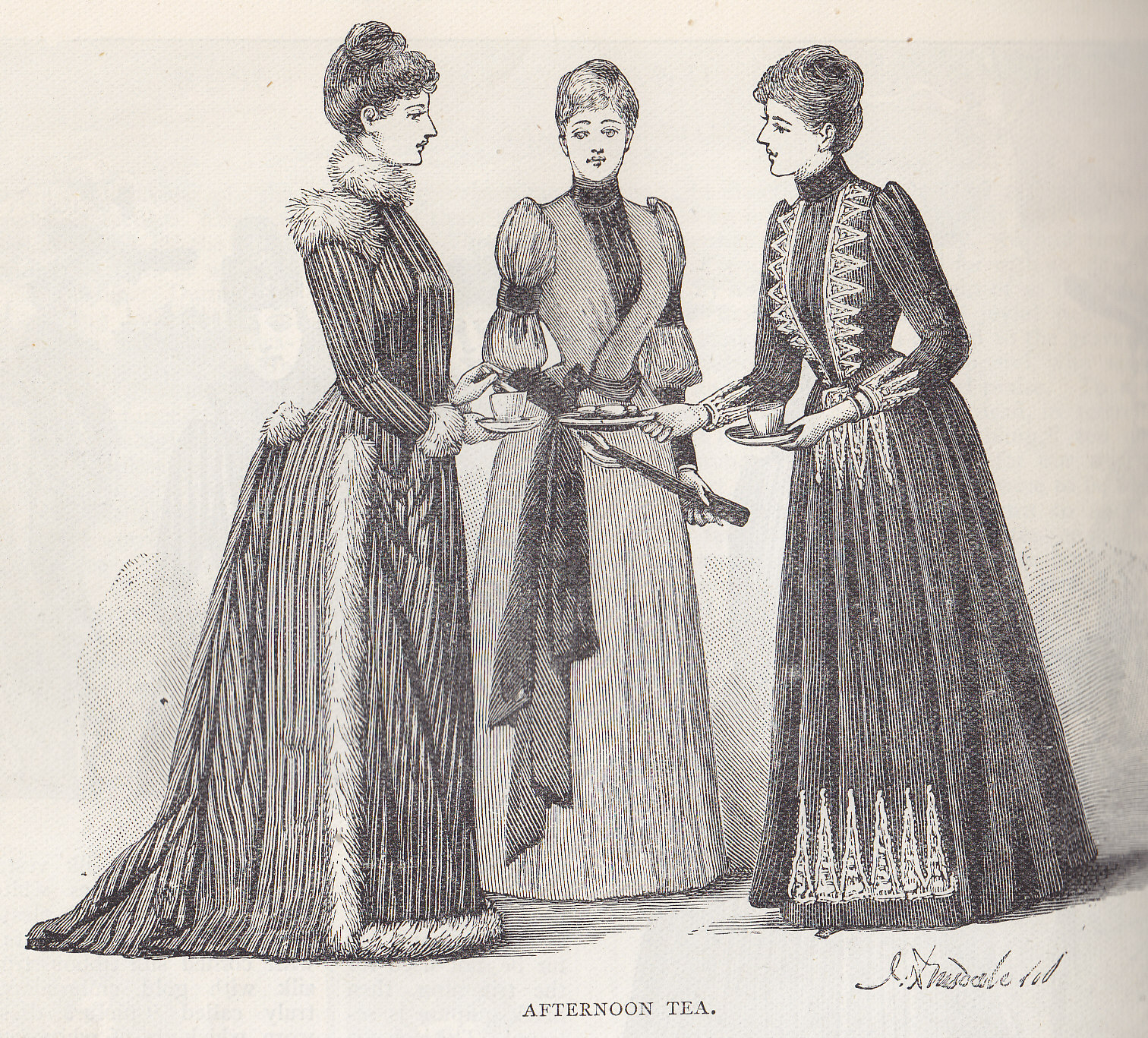
Afternoon outfits from the Girls’ Own Annual 1889
Conditions in Victorian workrooms varied from friendly and tolerable to Spartan and unpleasant. It seems that Eleanor enjoyed camaraderie with fellow workers at Pennington’s. She is picture here with other workroom girls, sporting the fabulous puffed sleeves of the mid 1890s.

Pennington workroom girls c. 1895
Professional dressmakers were distinguished from the truly impoverished sweated labourers by their higher wages and smarter outfits. They could almost be walking adverts for their employers, as seen in this final portrait of Eleanor (standing, left). Aren’t these winter ensembles magnificent? I love the frogging, the gloves and the muffs.

Eleanor with friends
If you’d like to know more about the life of working women in Victorian times, why not join us for a History Wardrobe presentation – A Very Victorian Lady? We feature all-original 19th century garments, and explore the lives of milliners, mill workers, mothers and even emigrants. You can find all event details on our website diary:
April 27, 2017
A Fabulous Fifties Afternoon Tea
Happy memories of a lovely vintage afternoon
On Sunday, my friend and colleague Katie and I treated our mums to afternoon tea with a vintage twist. Organised by the Friends of the Richardson Hospital in Barnard Castle, the Fabulous Fifties Afternoon Tea combined three of my favourite things – 1950s fashion, history and lots and lots of cake.
Such a lovely event required an extra special outfit and I decided only a circle skirt would do. I love the Eliza M Vintage Circle Skirt pattern as it is so easy to make and very flattering. I created the skirt below from some curtain fabric and, for such a bold print, it is surprising how many of my tops it goes with. On this occasion I wore it with a fuschia knitted top with a kind of wrap effect. It was also a fantastic opportunity to wear my new yellow fakelite beads and bangle from Splendette.
My…
View original post 298 more words


